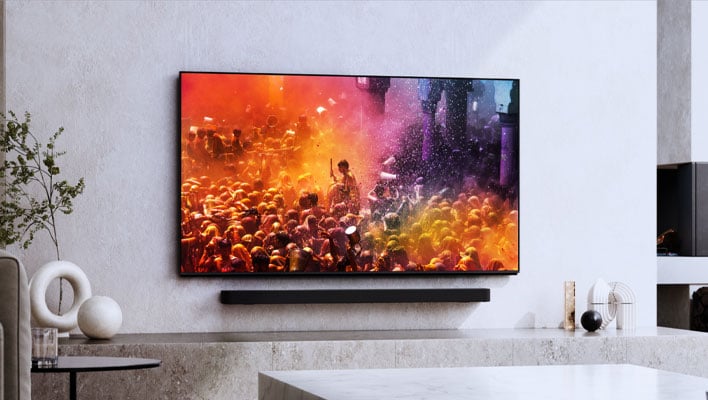Sony Shuns OLED For 2024 Flagship Bravia TV, Big And Bright Mini LED Leads The Pack

There are two premium display technologies competing for the attention of consumers, those being OLED and mini LED (you can throw micro LED into the mix as well, but it's not as widely adopted yet or remotely affordable). Sony has chosen a side for refreshed Bravia TV line for 2024: mini LED is the winner, though it will also offer OLED as an option, just not for its flagship.
It was rumored Sony was ditching OLED in favor of mini LED, leaving companies like Samsung and LG to duke it out in the pricier OLED arena. That decision is now confirmed with Sony's 2024 Bravia TV announcement. Additionally, Sony appears to be simplifying its product lines with easier-to-digest Bravia tiers, including Bravia 9 (flagship mini LED series), Bravia 8 (OLED models), Bravia 7 (mid-range Mini LED TVs), and Bravia 3 (entry-level LED models).
The top-of-the-line Bravia 9 with mini LED lighting will be offered in three sizes: 85-inch, 75-inch, and 65-inch. Meanwhile, the Bravia 8 lineup with OLED panels will come in 77-inch, 65-inch, and 55-inch size options. The mid-range Bravia 7 mini LED series will come in 85-inch, 75-inch, 65-inch, and 55-inch sizes, while the entry-level Bravia 3 LED models will be offered in 85-inch, 75-inch, 65-inch, 55-inch, 50-inch, and 53-inch display sizes.
By embracing mini LED for its flagship lineup, Sony is essentially putting an emphasis on brightness and it's ability on the processing side to bring the overall visual fidelity as close to OLED as possible.
"The Bravia 9 flagship mini LED is Sony's brightest 4K TV ever with thousands of mini LEDs precisely controlled by XR Backlight Master Drive, based on technology found in Sony's professional monitors used by filmmakers. With higher luminance than ever, new color volumes can be reached," Sony says.
According to Sony, it's newest mini LED TVs up the ante with 325% more local dimming zones while delivering 50% more brightness compared to the now previous generation X95L.
It's not just about the sheer amount of zones, though. According to Vincent Teoh, the TV guru behind the YouTube channel HDTVTest, Sony is taking a "more sophisticated approach" with the higher processing bandwidth of its LED drivers. This, according to Teoh, allows for "very specific targeting of luminance levels for different scenes and objects within those scenes." There's more to it than that, and we highly recommend checking out his video on the topic for geeky details that are not in Sony's press release.
Beyond the backlighting scheme, the Bravia 9 is every bit a 4K resolution flagship lineup with things like HDMI 2.1 connectivity with gaming-friendly features (auto low latency mode and variable refresh rate support, namely), a 120Hz native refresh rate, flexible HDR support (HDR10, HLG, and Dolby Vision), Google TV platform for smart chores, and the promise of "theater-like surround" sound with a Beam tweeter at the top and Frame tweeter on both sides.
Pricing on the Bravia 9 comes in at $5,499.99 for the 85-inch model, $3,999.99 for the 75-inch model, and $3,299.99 for the 65-inch model. Meanwhile, the Bravia 8 OLED comes in a bit cheaper at similar sizes, running $3,899.99 for the 77-inch model, $2,799.99 for the 65-inch model, and $1,999.99 for the 55-inch model.
For those who don't need the best of the best, the Bravia 7 with mini LED lighting costs $3,499.99 for the 85-inch model, $2,799.99 for the 75-inch model, $2,299.99 for the 65-inch option, and $1,899.99 for the 55-inch model.
Finally, the Bravia 3 is predictably the least expensive of the bunch with the 85-inch model carrying an MSRP of $1,799.99, the 75-inch model going for $1,299.99, the 65-inch model at $999.99, the 55-inch model at $849.99, the 50-inch model at $699.99, and the 43-inch model for $599.99.

